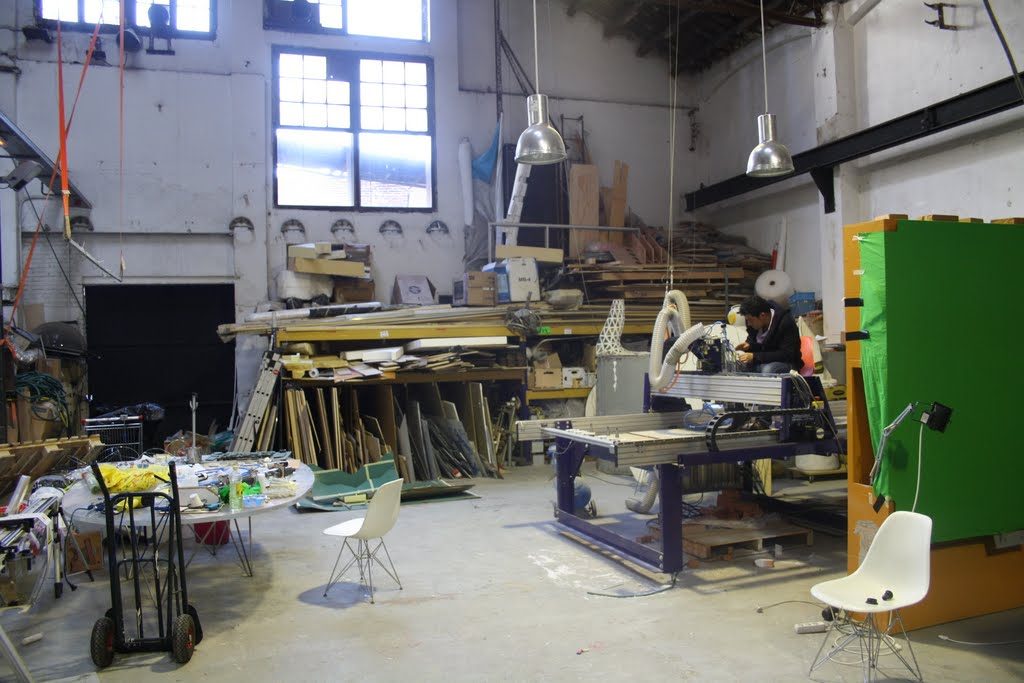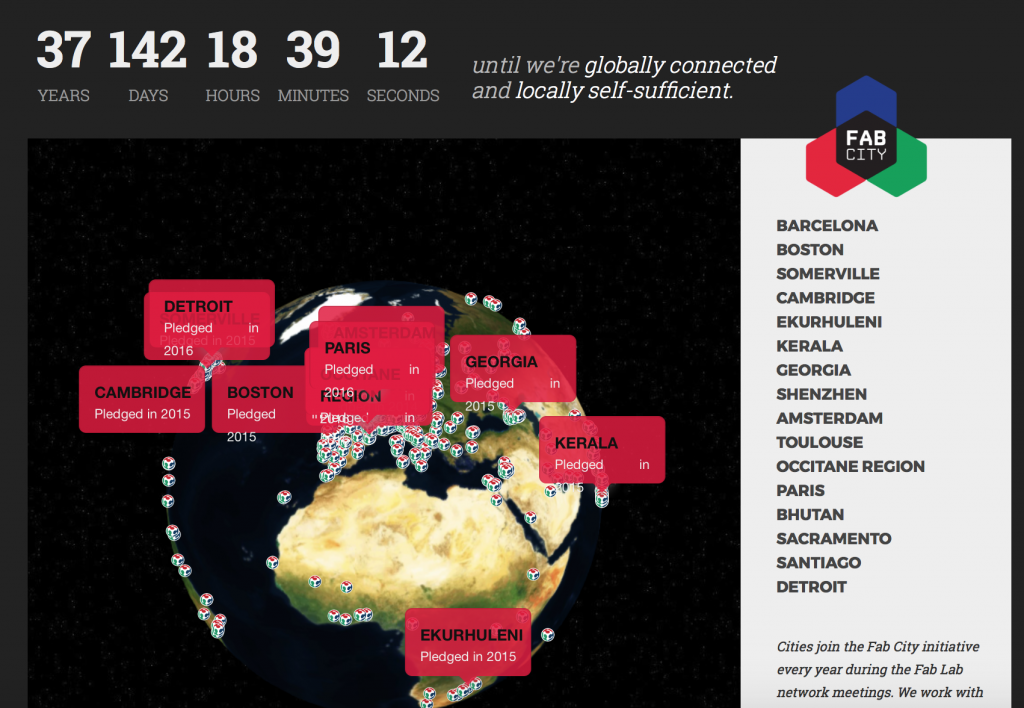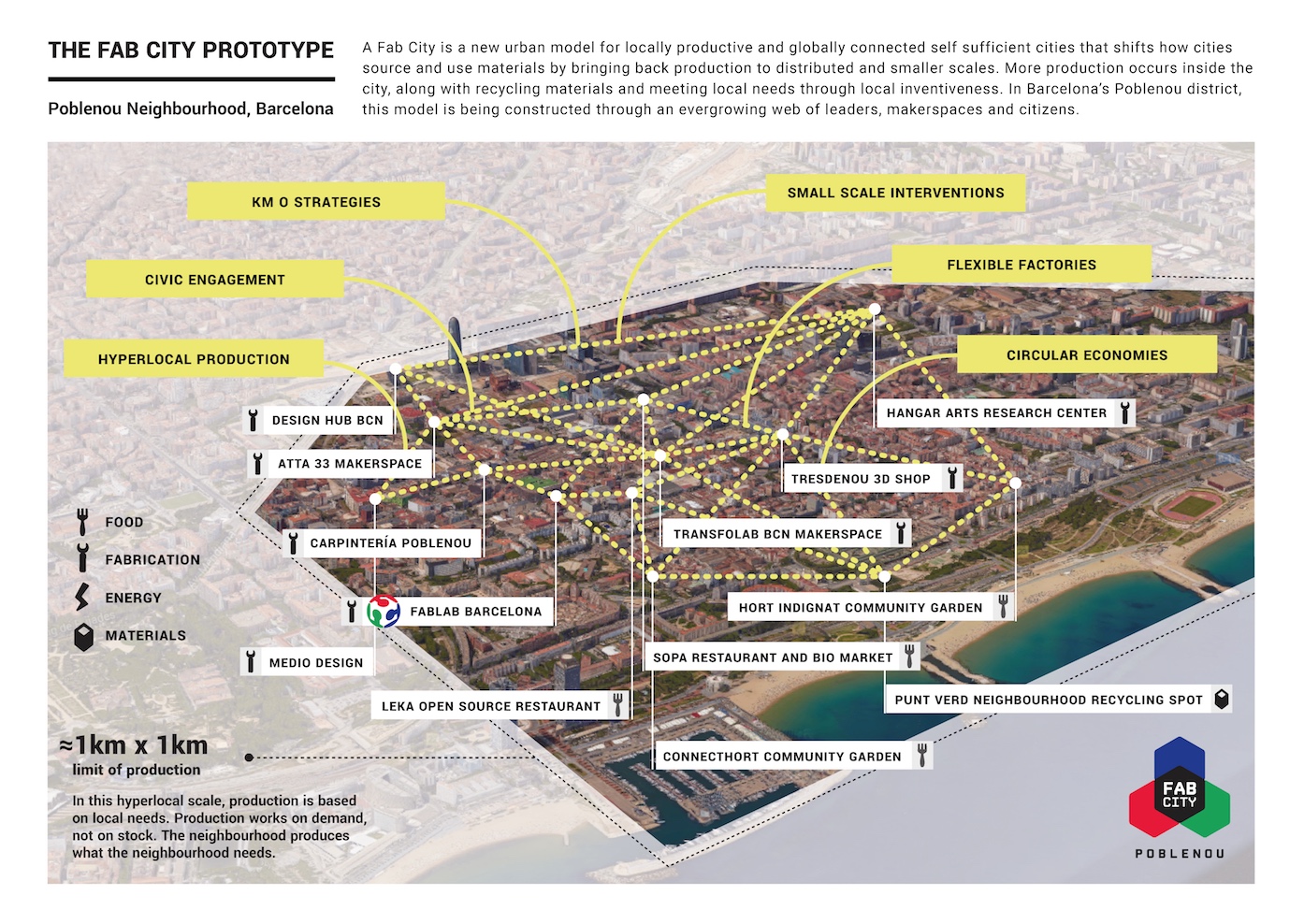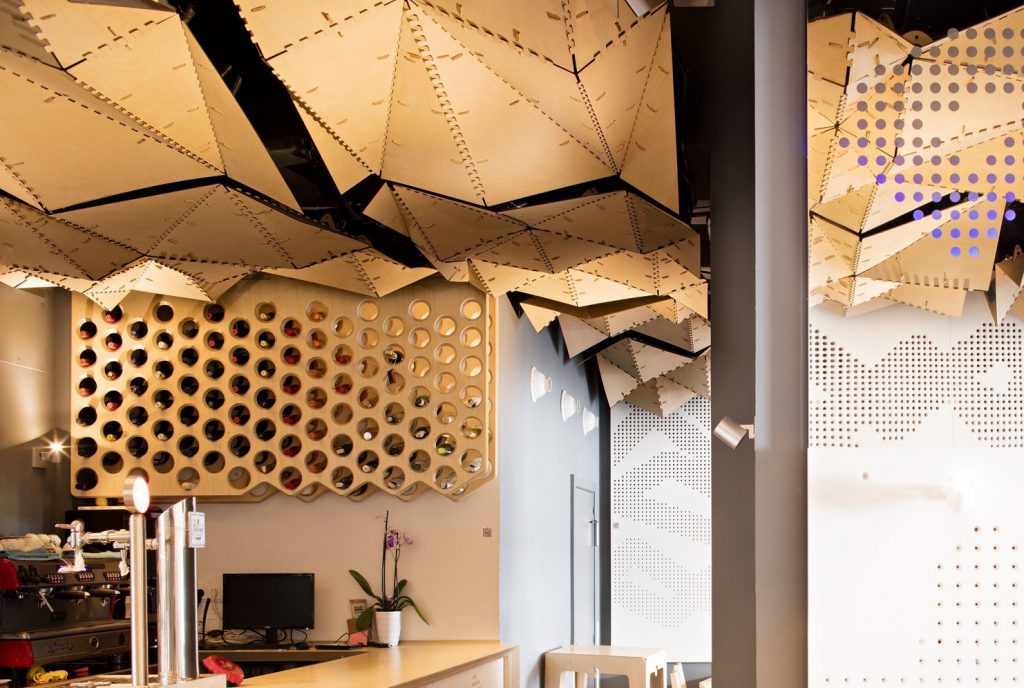Tomas Diez is an urbanist concerned with how to implement digital technologies to improve the way people live. As director of Fab Lab Barcelona, Diez takes the idea of a collaborative fabrication laboratory and applys it to the concept of a Fab City.
In an in depth interview with Benjamin Tincq, co-founder of the OuiShare collaborative economy movement, Diez shares more of his ideas for “A new urban model for locally productive and globally connected self-sufficient cities.”
What is a Fab Lab?
The founding principle of a Fab Lab is to offer a communal space for members to collaborate and learn “how to make almost anything”. A typical lab is equipped with a 3D printer and other means of digital fabrication, including CAD software and 3D scanners.
Some examples of Fab Lab projects previously reported by 3D Printing Industry include Jalalabad Fab Lab in Afghanistan that gave internet to the city, and the Makerspace version of the workshops cropping up in universities.
Since Fab Labs first started at the Center for Bits and Atoms at the Massachusetts Institute of Technology (MIT) in 2001, they have spread to become a global movement with over 1000 different locations.
The Fab City concept is the product of seeing the potential for connections within this community, as Diez explains to OuiShare: “Fab Labs are not about technology, but are instead about the culture around technology.”

A globally connected community of Fab Cities by 2054
The Fab City concept was first proposed by Diez and his partners at the Institute for Advanced Architecture of Catalonia (IAAC) in 2011.
Going into further detail in his conversation with Tincq, Diez says:
Our approach is closely linked to the notion of circular economy, in the sense that we aim shorten and localise production loops. With the right infrastructure and knowledge, we could reduce the amount of material that a city imports and rescale globalisation. It also allows companies to create social value and not only profit.
The movement fits perfectly with the IAAC’s vision for a “digital revolution” in “research, education, production and outreach”. Designers from the IAAC are also behind the world’s first 3D printed bridge that was unveiled in December 2016. When 3D Printing Industry spoke to the IAAC bridge team, they shared their vision for developing the 3D printed construction process to work with materials available on the build site, for a more sustainable solution.
Founding Fab Lab Barcelona in 2014 was the first step to starting the Fab City movement, and Diez encourages other cities to get involved by the year 2054. To date over 12 cities have pledged their involvement in the Fab City movement, including a faction in Paris, France, co-founded by Tincq.

Barcelona as a model city
The Poblenou Neighbourhood is a 1.5 square kilometre district in Barcelona. Supported by the local government it has become a small-scale model of a Fab City, encompassing: eateries stocked with local produce; fabrication hubs; recycled material resources; and sustainable energy plants.

In addition to the city’s Fab Lab, Poblenou (also known as Poble Nou 22) is home to some innovative concepts such as the LEKA opensource restaurant, where all the recipes can be downloaded online; and the Hangar arts research center providing a community workspace for artists.

Though UK cities are not yet part of the Fab City consortium, the Mayor of London Sadiq Khan has released plans to develop the East of the city into a hub of technology. The plans include the launch of the UK’s largest center for 3D printing, and an industrial research laboratory. The way these developments are linked could in effect lead to the capitol’s movement towards Fab City status.
For anyone looking to get involved in the Fab City movement, further details can be found here.
If you already have a role in the Fab City community, or have a Fab Lab project you’d like to share with us, contact 3D Printing Industry here.
Featured image shows the Fab City logo over a photo of Barcelona. Image via FabLab.BCN on Facebook



